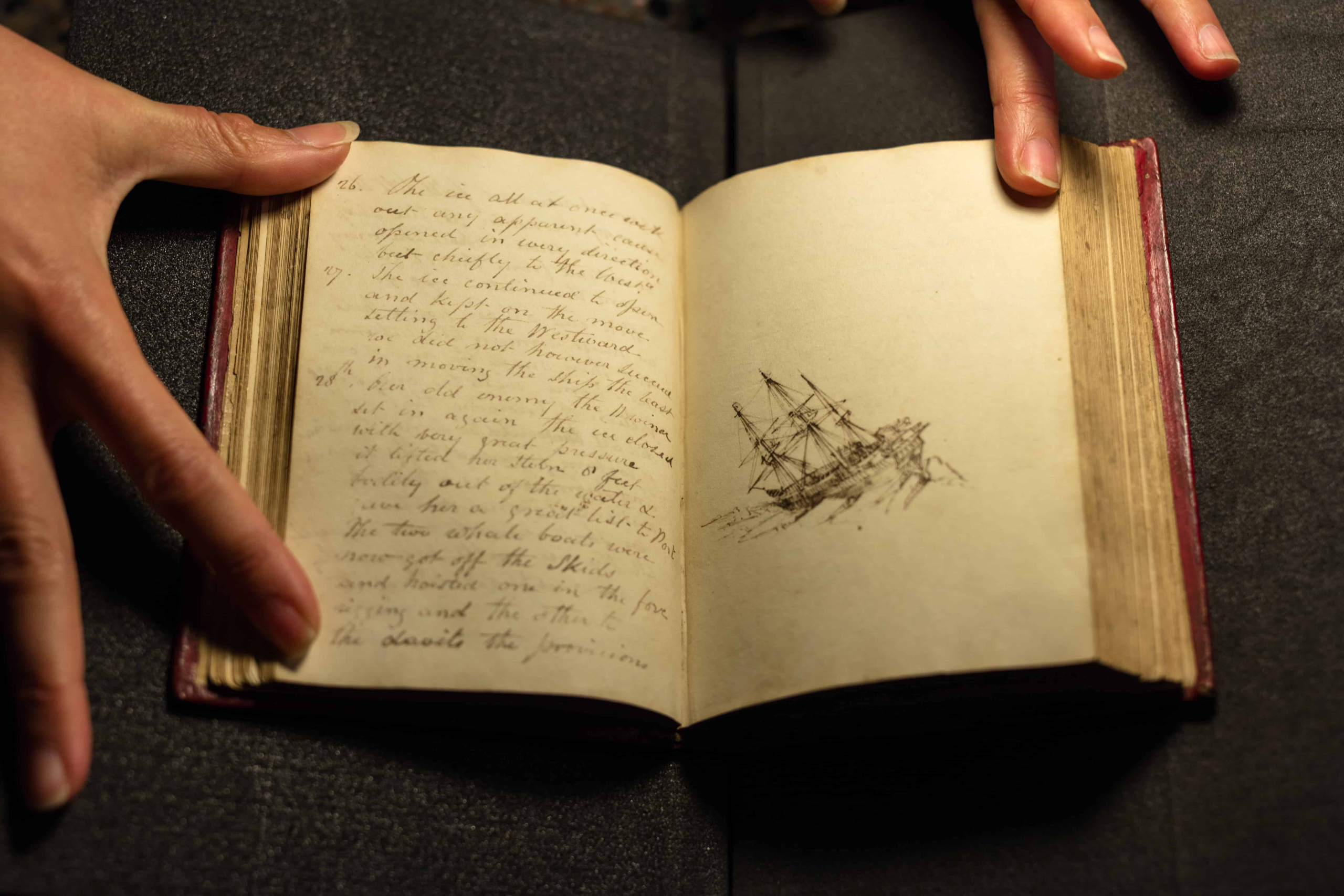The HMS Terror was found in Nunavut Bay on the morning of September 12, 2016. The ship was one of two vessels that became lost in the Franklin Expedition, a British voyage into the arctic that departed in 1845.
The ship was lost after becoming stuck in ice along with HMS Erebus. The expedition was undertaken in the hope of finding a Northwest Passage through the Arctic to China.
Lieutenant Owen Stanley of the British Royal Navy kept a journal detailing his personal experiences on HMS Terror. The journal has been housed at the University of Toronto’s Thomas Fisher Rare Book Library since 1971.
Stanley was the surveyor on the HMS Terror on an 1836 expedition, nine years before the Northwest passage expedition. A book of his watercolours from the voyage is also kept at the Rare Book Library.
In his journal, Stanley recounts the crew’s experience of becoming stuck in ice in the Arctic, where the ship remained for 10 months before breaking free. He is very detailed in his accounts of those 10 months and how the crew survived, not knowing if they would ever return to England.
Stanley discusses the crew’s relationship with the local Inuit community, which was mostly based on trade. He writes about the crew having a costume party aboard the ship to pass the time. He even made a watercolour painting of the event, depicting men dressed in furs and dresses, captioned “Arctic amusements.” He was also able to construct an “observatory” from his equipment and create a revolving roof using a sail from the ship.
Stanley also explains how to anchor a ship into the ice to keep it from drifting off. However, the ice itself can drift, causing the ship to end up far away from where it had originally stopped. No one knows how or why the HMS Terror remained lost for so long, but this could be an explanation as to why it was so hard to find.
Stanley’s journal cuts off in what seems to be the middle of a sentence, before he can address how the ship was able to become free. We do know that the ship made it back from that voyage safe and sound though, from a watercolour painting Stanley made of the ship sailing back to England.


